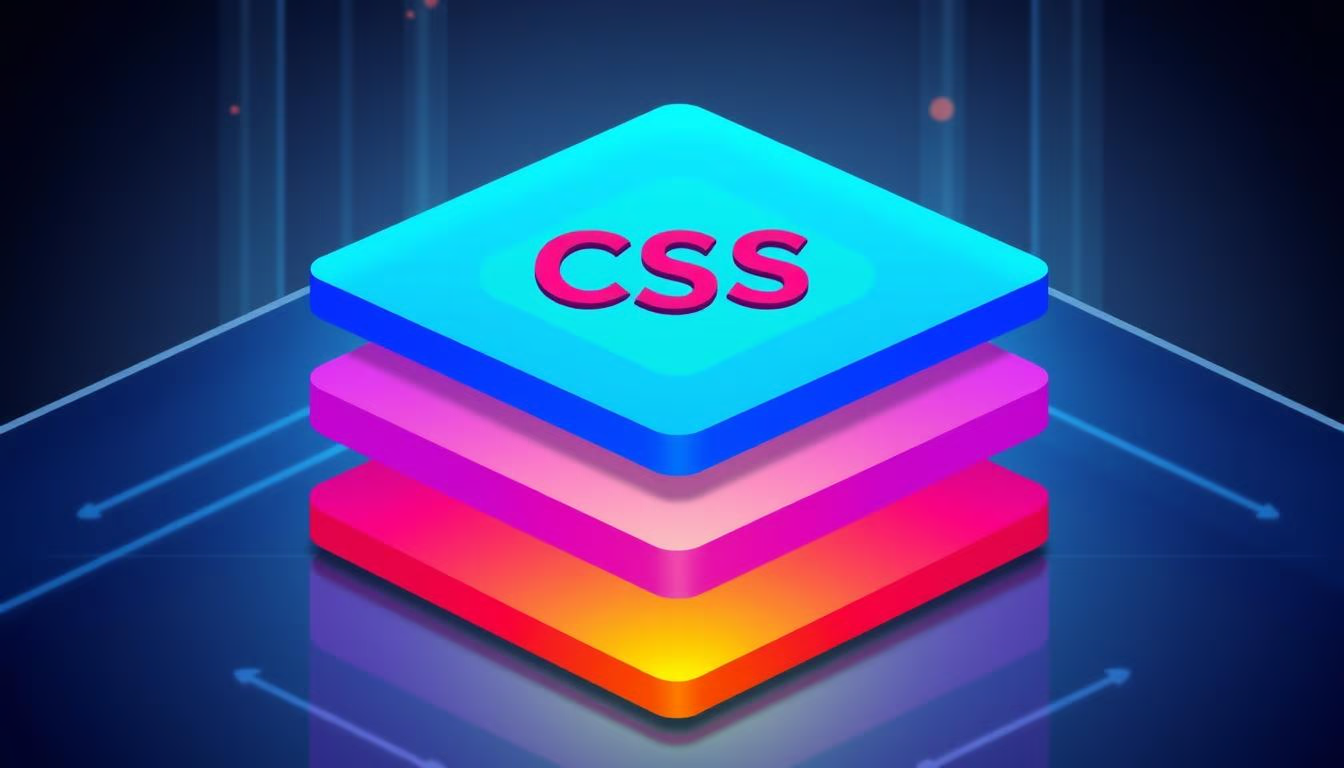
Top IT companies in Gujarat
October 24, 2024
October 15, 2024

In the world of web development, making websites look good and work well is always getting better. CSS nesting is a big part of this improvement. It makes writing code easier and helps keep websites organized.
The world of web development is always changing. The introduction of CSS nesting is a big step forward. It lets developers nest selectors inside other selectors, just like HTML. This makes stylesheets more organized and easier to scale.
CSS nesting is more than just a new CSS feature. It shows how CSS is getting better and easier to use. It lets developers create a clear structure in their stylesheets. This makes it simpler to handle complex user interfaces and improves the future of CSS.
One key advantage of CSS nesting is how it supports CSS trends towards better design. It lets developers group related styles together in one place. This makes it simpler to keep and update their code as needed.
As web development keeps growing, CSS nesting will be key in shaping the future of CSS. It helps developers style their projects in new, organized ways. By using CSS nesting, web developers can achieve more organization, efficiency, and creativity in their work.
"CSS nesting is a game-changer, allowing developers to create more modular and scalable stylesheets that reflect the structure of their HTML." - Jane Doe, Senior Web Developer
CSS nesting is a key feature in web development. It lets developers nest CSS selectors inside each other. This makes the code easier to read and manage.
CSS nesting lets developers write CSS rules for specific elements inside a parent element. It follows the HTML structure. This makes it simpler to style web elements.
CSS nesting is a big help for web developers. It makes styling web elements more intuitive and keeps the code organized.
https://www.youtube.com/watch?v=YnWPeA6l5UE
The story of CSS nesting starts with the growth of CSS preprocessors. Tools like Sass, Less, and Stylus have been key in shaping CSS's future. They brought in features like variables, mixins, and nested rules, making styling more advanced.
At first, CSS had trouble keeping up with complex web apps. Developers faced a mess of styles, making it hard to manage. That's when CSS preprocessors came in, changing how we write CSS.
Sass changed the game in 2006. It made CSS code more modular and easier to maintain. With variables, mixins, and nested rules, Sass paved the way for CSS nesting.
As CSS preprocessors became more popular, tools like Less and Stylus followed. They added more features, making CSS development better. This led to the widespread use of CSS nesting.
The growth of CSS preprocessors has been vital for CSS nesting. They allowed developers to nest selectors and create complex CSS structures. This has set the stage for the new CSS nesting feature, which will change CSS writing and maintenance.
CSS nesting is a powerful feature that makes writing stylesheets easier. It lets you nest selectors inside each other. This creates a structure that mirrors the HTML document, making your code more intuitive and easier to maintain.
The syntax for CSS nesting is simple. Just put the nested selectors inside the curly braces of the parent selector. Indent them to show the hierarchy. For example:
.parent {
color: #333;
.child {
font-size: 16px;
&:hover {
color: #666;
}
}
}
In this example, the .child selector is nested inside the .parent selector. The &:hover pseudo-class is nested within the .child selector.
One big benefit of CSS nesting is making styles more reusable and modular. Nesting related styles lets you encapsulate the visual traits of specific elements. This makes it easier to apply consistent styles across your project.
Also, CSS nesting improves the readability of your stylesheets. The nested structure mirrors the HTML element hierarchy. This is very helpful for large-scale projects with complex UI structures.
Overall, CSS nesting is a valuable tool for web developers. It offers a more intuitive and organized way to write and maintain stylesheets. By learning the CSS nesting syntax and best practices, you can create more efficient and scalable CSS solutions for your projects.
CSS nesting is becoming more popular. It's key to know how to use it well. By following some simple rules, developers can make styles more modular and scalable. They can also keep their styles easy to read.
When using CSS nesting, watch how deep you nest. Too much nesting can make your code hard to manage. It's best to keep nesting to 3-4 levels. This makes your styles easy to read and understand.
CSS nesting is great for making styles modular and scalable. Nesting styles based on your HTML structure helps keep related styles together. This makes it easier to update and maintain your code as your project grows.
Also, CSS nesting helps avoid repeating code. You can set common styles at higher levels and then adjust them as needed. This makes your code more efficient and easier to manage.
| Best Practices for CSS Nesting | Description |
|---|---|
| Limit Nesting Depth | Keep nesting depth to 3-4 levels for better readability |
| Create Modular Styles | Organize styles based on the logical structure of your HTML |
| Write Scalable Code | Use nesting to write more DRY (Don't Repeat Yourself) code |
By sticking to these best practices for CSS nesting, developers can make the most of this feature. They can create stylesheets that are easier to maintain, grow with their projects, and are easy to read.
CSS nesting is becoming more popular, and it's great to see how it's being used in popular CSS preprocessors. These tools help developers manage their stylesheets better. CSS nesting has made them even more appealing.
Sass, a top CSS preprocessor, loves CSS nesting. It supports both the original Sass and SCSS formats. This means developers can write styles in a way that matches their HTML structure.
For example, in Sass or SCSS, you can nest your styles like this:
nav {
ul {
margin: 0;
padding: 0;
list-style: none;
}
li {
display: inline-block;
}
a {
display: block;
padding: 6px 12px;
text-decoration: none;
}
}
Less and Stylus, other top CSS preprocessors, also support CSS nesting. They each have their own way of doing it. This makes organizing styles easier and more logical.
In Less, you can nest styles using curly braces, just like in regular CSS:
nav {
ul {
margin: 0;
padding: 0;
list-style: none;
}
li {
display: inline-block;
}
a {
display: block;
padding: 6px 12px;
text-decoration: none;
}
}
Stylus uses indentation to nest styles. This is great for developers who like Python or similar languages. Here's how Stylus nesting looks:
nav {
ul {
margin: 0 padding: 0 list-style: none
}
li {
display: inline-block
}
a {
display: block padding: 6px 12px text-decoration: none
}
}
By using CSS nesting, these preprocessors help developers write better stylesheets. This is leading to a new era of css nesting in sass, css nesting in less, and css nesting in stylus. As more developers use css preprocessors and nesting, the future of CSS looks very promising.
The world of CSS is always changing, and the future of CSS nesting is very exciting. It promises to change how we design and develop websites. There's a lot of talk about adding CSS nesting to the core CSS language.
The native CSS nesting proposal wants to add CSS nesting to the core CSS language. This means no need for extra tools or preprocessors. It's part of the CSS Modules initiative and could change how we write stylesheets.
This feature would let developers nest selectors in CSS without extra syntax. It makes code easier to read and maintain. This could be a big step for the future of CSS and open up new possibilities.
The native CSS nesting proposal shows the ongoing work to improve CSS nesting. It aims to give developers better tools to make stunning and well-structured websites.
"The native CSS nesting proposal represents a significant step forward in the evolution of CSS, empowering developers to write more modular, scalable, and maintainable styles."
CSS nesting is changing web development. It lets developers nest selectors, making stylesheets easier to manage. This leads to cleaner, more flexible, and easier-to-read code.
Using CSS nesting brings many benefits. It makes code easier to organize and understand. It also makes maintaining stylesheets simpler. Tools like Sass and Less have made nesting more popular, showing its growing importance.
The future looks bright for CSS nesting. It's set to become a standard part of CSS, making it easier for everyone to use. This will make web development more efficient and user-friendly, improving the web for everyone.
CSS Nesting is a feature that lets developers nest selectors inside other selectors. It mirrors HTML structure. This makes stylesheets easier to organize and maintain.
Using CSS Nesting improves code organization and readability. It also makes styles more scalable and modular. Plus, it helps write more concise stylesheets.
CSS Nesting uses a specific syntax. Selectors are nested inside other selectors, creating a hierarchical structure. This structure mirrors the HTML document. It allows developers to style elements based on their DOM position.
To use CSS Nesting well, manage nesting depth for better readability. Use nesting for modular and scalable styles. But avoid too much nesting to prevent performance issues.
CSS Nesting is supported in CSS preprocessors like Sass and SCSS, and Less and Stylus. These tools offer their own syntax and features. They help developers use CSS Nesting effectively.
The future of CSS Nesting is bright. There are plans to add CSS Nesting to the core CSS specification. This would make it widely available for web developers to use.

Top IT companies in Gujarat
October 24, 2024

Hire a Dedicated App Developer: Build Your App Today
October 24, 2024
-1729776429043.avif?alt=media&token=2affca87-dade-4f14-94cb-2c2416a8238d)
What is Angular? Superior Web Development, Performance & Benefits
October 24, 2024

Building a Tech Stack for Growth: Tools and Technologies Driving Business Expansion
October 15, 2024
-1729777074986.avif?alt=media&token=c8b8bf65-87d3-47d8-b990-3ff1929ea86f)
Amazing Tech: Is AI-Powered App Development with FlutterFlow the Future?
October 15, 2024

What is CSS nesting?
October 15, 2024